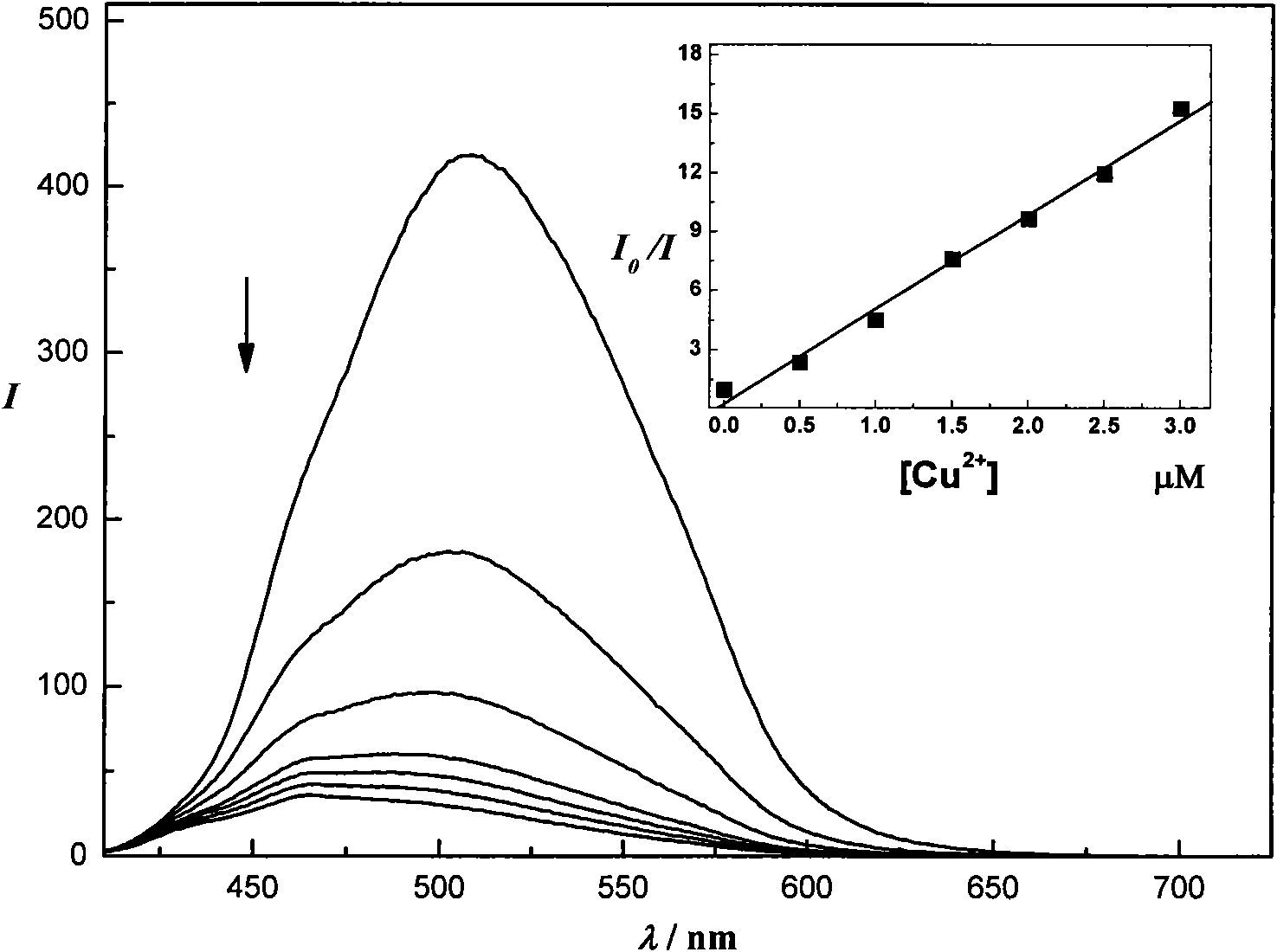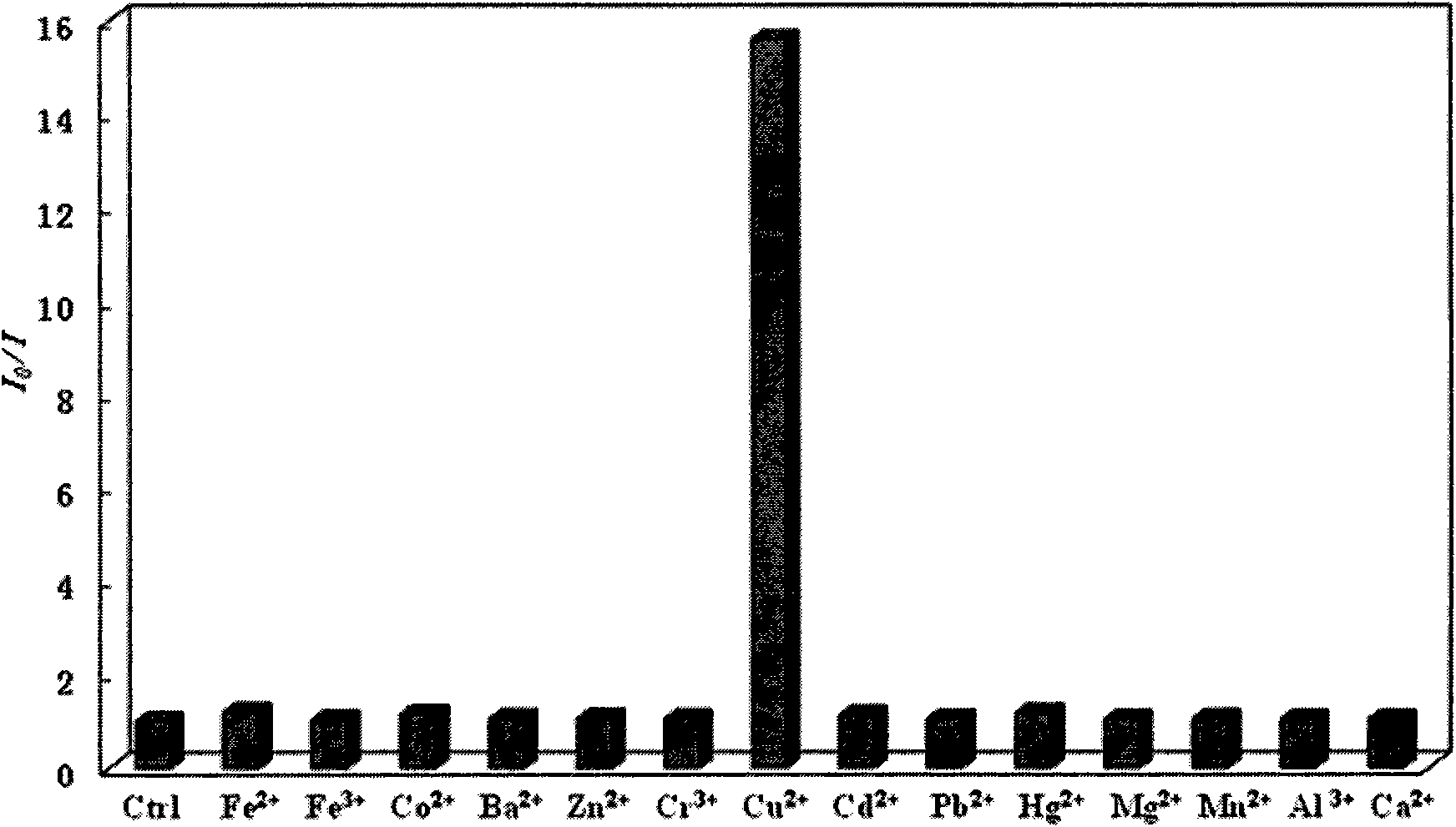Polycarboxyl fluorescent conjugated polyelectrolyte, preparation method and application
A conjugated polyelectrolyte, polyelectrolyte technology, applied in the fields of chemistry, materials and biochemical sensing, can solve the problems of poor water solubility, instability, low fluorescence quantum yield, etc., to achieve improved water solubility, enhanced fluorescence stability, high selective effect
- Summary
- Abstract
- Description
- Claims
- Application Information
AI Technical Summary
Problems solved by technology
Method used
Image
Examples
Embodiment 1
[0024] Embodiment 1 Preparation of a polycarboxyl fluorescent conjugated polyelectrolyte (taking k=1 as an example)
[0025] 1) Grind 22.4g of potassium hydroxide into powder and dissolve it in 170mL of dimethyl sulfoxide, quickly add 8.8g of hydroquinone under anaerobic conditions; after stirring evenly, slowly add ethyl 4-bromobutyrate dropwise 46mL; the reaction mixture was stirred at room temperature for 3 days; after the reaction was completed, 1L of ice water was added and stirred rapidly, and a white solid was precipitated; after filtering, it was rinsed with a large amount of distilled water, and dried in vacuum to obtain 1,4-di(4-oxobutanoic acid ethyl ester ) Benzene, see compound (1) in the synthetic route. 1 H-NMR (CDCl 3 ,δ ppm ): 1.25(t, 6H), 2.08(quintet, 4H), 2.50(t, 4H), 3.95(t, 4H), 4.13(q, 4H), 6.80(s, 4H); ESI-TOF 361.3, [ M+Na]; FTIR (KBr, cm -1 ): 2980, 1729, 1510, 1472, 1420, 1378, 1358, 1273, 1226, 1181, 1117, 1098, 1061, 1037, 918, 881, 859, 837, 8...
Embodiment 2
[0033] Example 2 A polycarboxyl fluorescent conjugated polyelectrolyte (taking k=1 as an example) is used for the highly sensitive detection of copper ions
[0034] 1) Use phosphate buffer solution (10mM, pH 7.4) to prepare the polycarboxy fluorescent conjugated polyelectrolyte to a concentration of 5×10 -6 Dilute solution of M;
[0035] 2) Add copper ion standard solutions of different concentrations into the aforementioned dilute solution of polycarboxyl fluorescent conjugated polyelectrolyte, measure its fluorescence emission spectrum, and draw a standard curve according to the change of fluorescence intensity. In the concentration range of 0-3μM, the degree of fluorescence quenching of polycarboxy fluorescent conjugated polyelectrolytes has a linear relationship with the concentration of copper ions (see figure 1 ), and most other metal ions have no significant interference (see figure 2 ).
[0036] 3) Dilute the copper ions to be tested to 0~3×10 -6 The solution of M...
PUM
 Login to View More
Login to View More Abstract
Description
Claims
Application Information
 Login to View More
Login to View More - R&D
- Intellectual Property
- Life Sciences
- Materials
- Tech Scout
- Unparalleled Data Quality
- Higher Quality Content
- 60% Fewer Hallucinations
Browse by: Latest US Patents, China's latest patents, Technical Efficacy Thesaurus, Application Domain, Technology Topic, Popular Technical Reports.
© 2025 PatSnap. All rights reserved.Legal|Privacy policy|Modern Slavery Act Transparency Statement|Sitemap|About US| Contact US: help@patsnap.com



